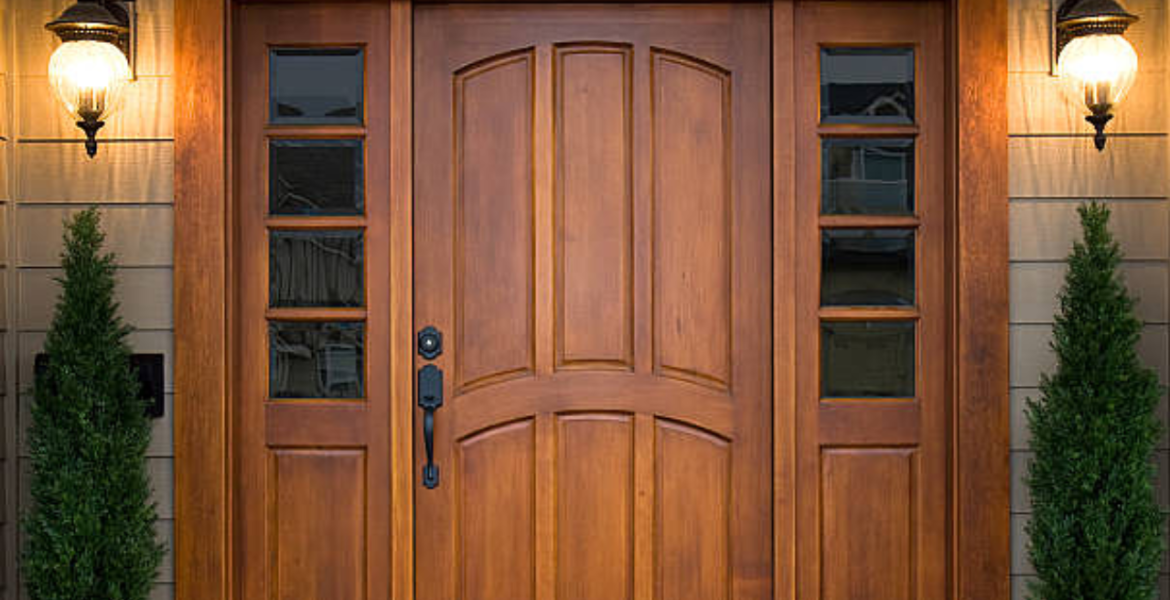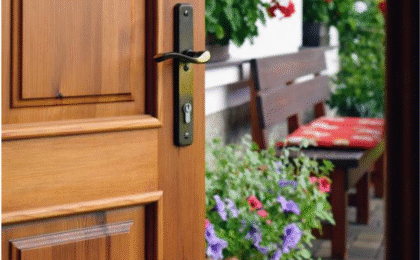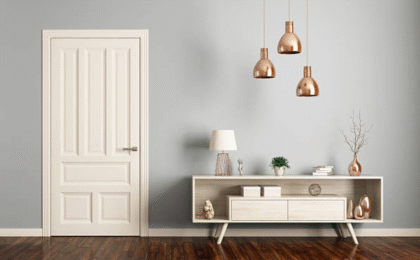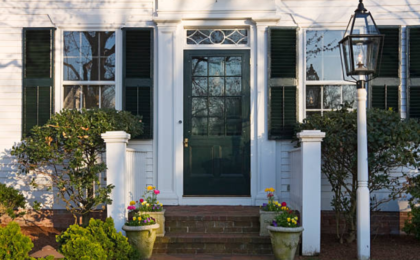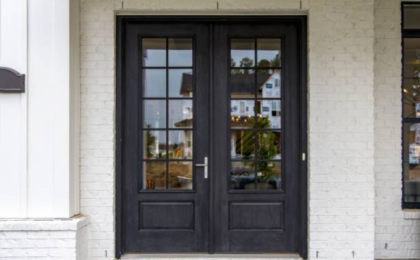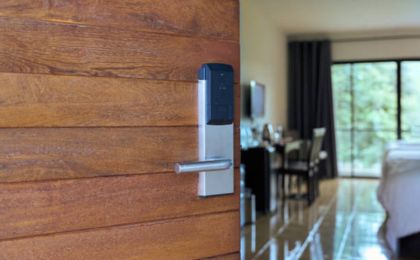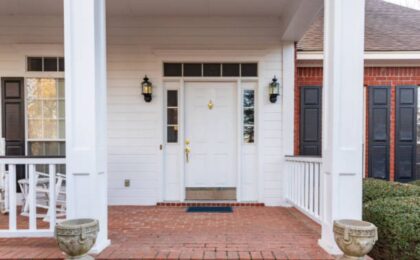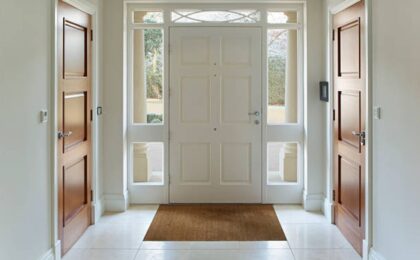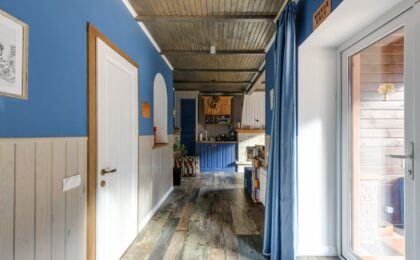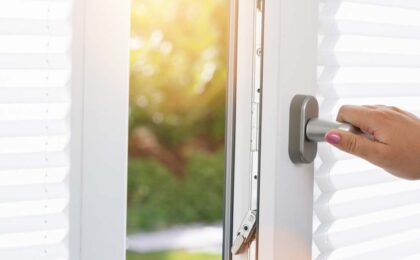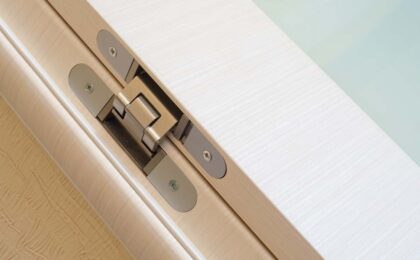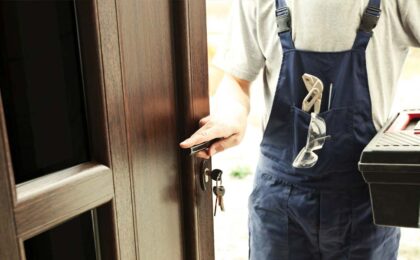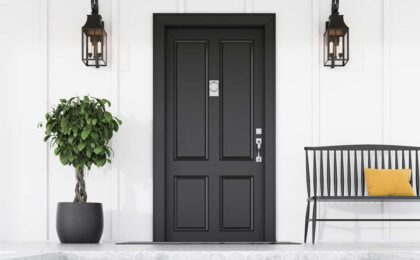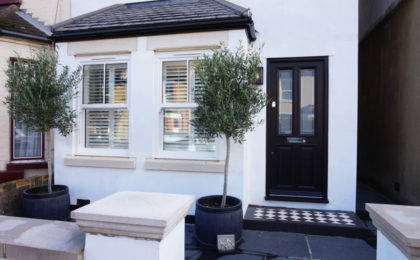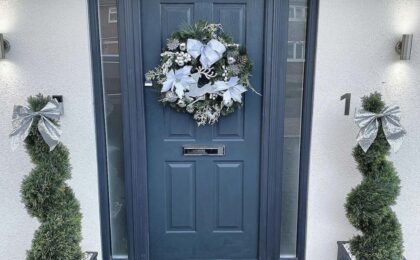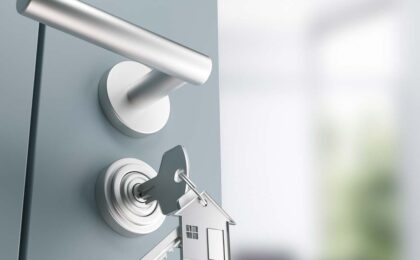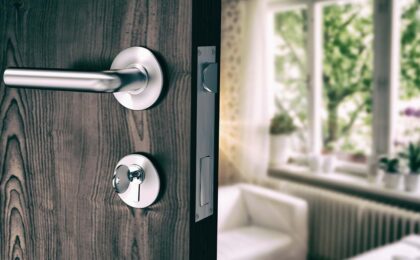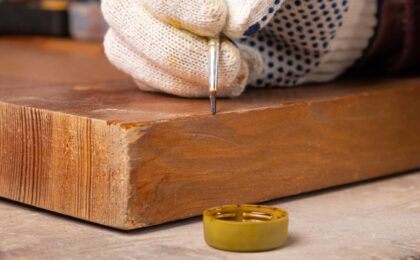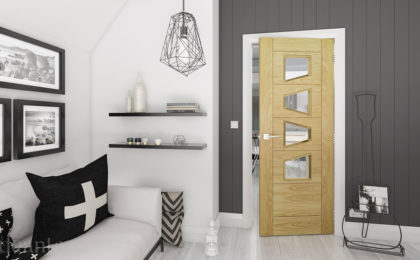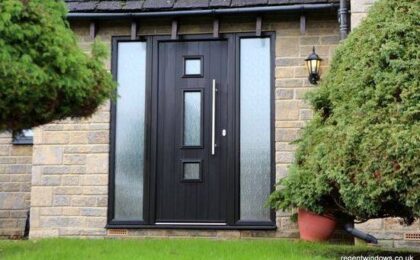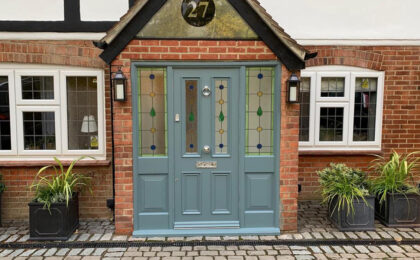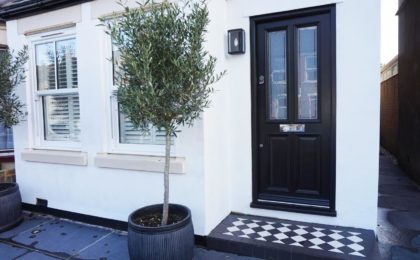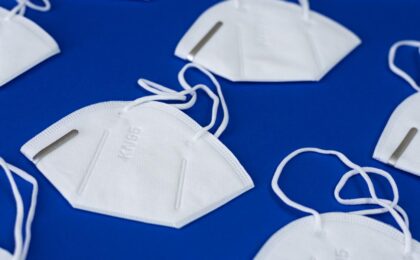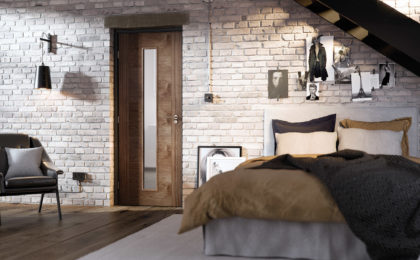When you’re choosing a new front door, one big question matters most: How secure are composite doors? As a trusted doors company in London, Afforde Doors understands that homeowners want both peace of mind and stylish entryways. In this post, we look in-depth at every security aspect of composite exterior doors to explain why they’re one of the most reliable choices for protecting your home.
In this blog, we’ll explore the Security Features of Composite Doors.
Construction: Core materials and their contribution to security
Solid timber core vs foam core reinforced with GRP or ABS
High-quality composite doors often feature a solid timber core, typically around 48 mm thick, wrapped in a weather-resistant surface. Others use foam cores reinforced with GRP (Glass Reinforced Plastic) or ABS for added strength. This multi‑layered construction blends rigidity, insulation, and resilience—making it significantly tougher to kick in or split compared to uPVC or hollow wooden doors.
Impact‑resistant GRP exterior and laminated glazing options
A durable GRP skin forms the outer layer of the door, providing exceptional resistance to dents, scratches, and harsh weather. Add toughened or laminated glazing, and you’re shielding your entry from glass removal or smashing—the glass is bonded tightly into the frame to eliminate easy access.
Locking Mechanisms: How composite doors keep intruders out
Multi‑point locking systems – hooks, deadbolts, finger bolts
Your composite door will typically have a multi-point locking system, which secures the door at several points along the frame—often with hooks, deadbolts, and compression bolts. This design vastly outperforms single-cylinder locks and prevents the door from being prised open.
High‑security cylinder locks: anti‑snap, anti‑drill, anti‑pick
Trusted locking cylinders now come with anti‑snap, anti‑drill and anti‑pick protections. Many meet the TS007 3‑Star standard or similar ratings, which block the most common forced-entry techniques.
Smart-lock integration – optional modern enhancement
Some composite doors support smart lock integration, enabling remote monitoring, alerts, or integration with voice assistants. These features offer an extra layer of both convenience and security.
Material strength: why composite doors resist forced entry
Laminated hardwood, GRP exterior, steel‑reinforced frames
The combination of a rigid hardwood core, GRP outer skin, and often steel-reinforced frames creates an entry barrier designed to resist levering or brute force. These materials keep the door stable, strong, and unlikely to warp or buckle over time.
Comparison vs timber, uPVC, and aluminium doors
- Wooden doors may warp, crack or degrade, weakening security.
- uPVC doors are usually hollow or foam-filled, making them easier to breach.
- Aluminium doors can be strong, but when unreinforced often underperform in real-world force resistance.
Composite doors typically outperform all three in resistance to forced entry and long-term strength.
Break‑in resistance: real‑world performance and standards
PAS 24 certification and Secured by Design
Top-tier composite doors comply with PAS 24, a UK standard that rigorously tests products against simulated break-ins—using manual attacks, mechanical loading, and impact tests. Many also hold Secured by Design status, offering further validation through police-backed crime prevention initiatives. At Afforde Doors, our trusted Solidor fitters ensure that every installation meets or exceeds these security standards, giving homeowners added confidence in both product and workmanship.
Resistance to snapping, drilling, lever force, kicking
Standard PAS 24 testing includes simulated snapping, drilling, crowbar forcing, and impact/kicking attacks, all designed to replicate real-world tactics used by intruders. Doors that pass deliver proven resistance in these scenarios.
Additional security enhancements homeowners should consider
Reinforced hinges and long hinge screws
Secure installation matters. Using reinforced hinges combined with extended screws prevents removal from the hinge side and adds resilience to physical force attacks.
Heavy‑duty strike plates and cylinder guards
Strike plates reinforced with metal and large-screw fixings strengthen the locking slots. Many systems include cylinder guards to protect the lock from drilling or snapping attempts.
Extras: spy‑holes, security chains, laminated glazing, smart‑locks integration
- Spy-holes and peepholes offer safer ways to verify visitors.
- Interior chains or bolts enable added layer of security when you’re home.
- Laminated glazing helps prevent glass panes from being removed easily.
- Smart locks or sensors offer real-time alerts and remote access control.
You might also explore secure internal door installation options inside the home that complement entry-level defense strategies.
Maintenance and long‑term reliability of security features
No warping, minimal maintenance, longevity of locking systems
Composite doors resist moisture, UV damage, and warping—unlike many timber doors. The GRP skin and stable core mean these doors stay square and functional longer. Locking systems typically require little more than occasional lubrication and hinge checkups to remain effective.
Warranty and security guarantees
Most composite doors come with generous warranties often 10 years or more covering not just finish but mechanical components too. Some manufacturers offer security guarantees (e.g. compensation up to a certain amount in case of forced entry) for added peace of mind.
Summary & reassurance
Composite doors offer a robust, low-maintenance and highly secure entry solution. Their layered design combining a strong core, durable GRP skin, reinforced locks, and compliance with PAS 24 makes them one of the best defenses against opportunistic burglaries.
If you’re seeking reliable composite exterior doors with maximum security backed by expert installation, don’t hesitate to connect with Afforde Doors a trusted doors company in London. We’re happy to provide guidance specific to your home, security needs, and preferred style and help you choose the ideal door system.
FAQs – Answering homeowner concerns
How secure are composite doors compared to others?
Because of their multi-layer construction, strong core, and reinforced frame, composite doors are far more resistant to forced entry than wooden or uPVC doors—and rival many aluminium doors in strength.
What locking mechanisms do they use?
Most use multi-point locking systems paired with certified high-security cylinders (anti-snap, anti-drill, anti-pick), delivering multiple locking points and exceptional resistance.
Are they resistant to break-in tools and tactics?
Yes. Composite doors that meet PAS 24 standards have been subjected to realistic break‑in tests including manual attack, mechanical loading, and impact.
 0208 643 3641
0208 643 3641